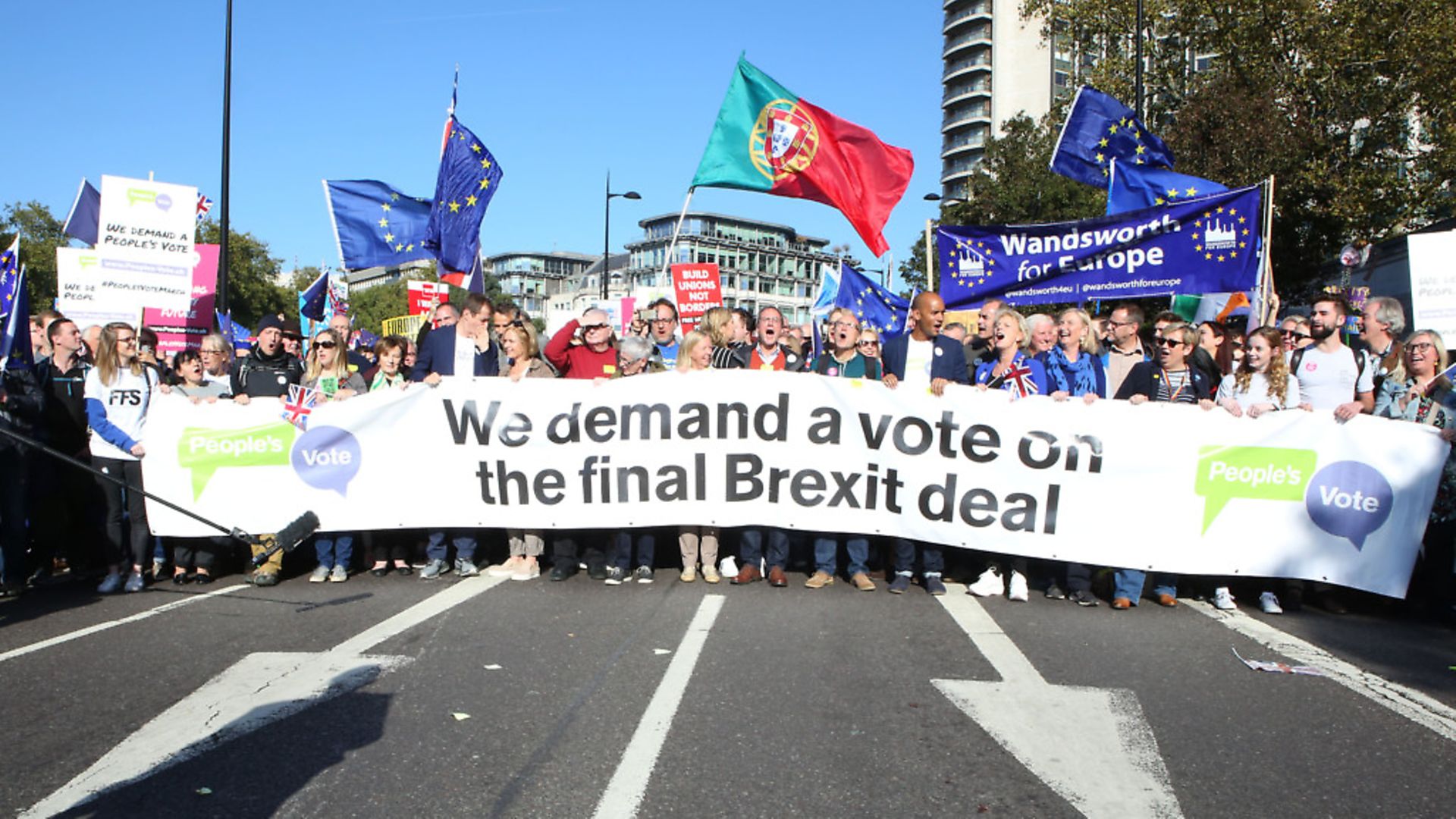
Leading pollster PETER KELLNER on the inexorable logic driving calls for a People’s vote.
Here is a thought experiment. Imagine that the Brexit referendum two years ago had weighted each vote by age. That is, the votes of 20 year-olds, with more than 60 years (on average) still to live, would have six time the weight of retired people with a life expectancy of ten more years. It would reflect the fact that the outcome of the current Brexit saga will affect young voters for far longer than those in their seventies or eighties.
Before anyone shrieks against this exercise in outrageous ageism, I am not actually proposing a change in the laws on referendums. But, as a theoretical exercise, it makes an important point. We know that young voters are overwhelmingly opposed to Brexit, while older voters voted two-to-one to leave the EU.
I have taken YouGov’s analysis of the referendum result by the age of its respondents. My estimate is that such an age-weighted recalculation of the vote would have produced not a 52-48% majority for Brexit, but a clear majority, approaching 60-40%, for staying in the EU.
Back to reality: one person one vote – regardless of age – is, rightly, here to stay. But even on that basis, we are rapidly approaching the day when the declared result of the 2016 referendum can be called into question.
This argument does not depend on voters having the right to change their minds – though they do, and the minority of voters who have changed their mind have switched more from Leave to Remain than Remain to Leave. The argument here is more narrowly about demographics.
Around 600,000 Britons die each year; a further 700,000 reach voting age. Taking account of polling data about older voters, and recent surveys of the views of new voters, and allowing for the fact that older electors are more likely to vote than younger electors, we find that:
n 320,000 Leave voters and 160,000 Remain voters die each year,
n 395,000 Remain voters and 60,000 Leave voters reach voting age each year.
Combining these two sets of figures, and demography alone is shrinking the Leave majority by almost 500,000 a year, or 1,350 a day. As the overall Leave majority in the referendum was 1,269,501, the effect is to cause the Leave majority to disappear on January 19, ten weeks before the scheduled Brexit day.
That calculation is an estimate, subject to a margin of error. But the direction, and broad dimensions, of demographic change are clear. By March 29, around 1.6 million people will have died and almost two million youngsters will have gained the right to vote. Even without a single voter of two years ago changing their minds, Brexit will cease to be the desire of a majority of living voters in the early weeks of next year.
Put another way, those who say that it would be a democratic travesty to reverse the decision of the 2016 referendum are implicitly saying that, by next spring, the views of dead voters should still count, while the wishes of those who have reached the age of 18 since June 23, 2016 should be ignored.
To make this point is not in any way to concede the wider democratic argument about the case for a public vote. Polls since the agreement was announced have shown that most voters want a fresh referendum. By 59-41% (excluding don’t knows), voters want a public vote anyway; and the margin rises to almost two to one (64-36%) if no deal is approved and the choice is between no-deal and no Brexit. And support for Remain is also rising.
We should not be surprised. Fully 75% of the public believe that the Brexit being delivered is ‘nothing like that which was promised two years ago’. Just seven per cent disagree. A big majority thinks that Brexit ‘is turning into a disaster for our businesses, our public services and the future of our young people’.
Already in September, more people (44%) expected the economy to be weaker than stronger (21%). That two-to-one gulf has now widened to a four-to-one chasm. There has also been an increase in pessimism on the NHS, the standard of living, and the future prospects for today’s children, if Brexit goes ahead.
Views may change; and no government should ever be a slave to opinion poll findings. But in as far as the debate is about democracy and the will of the people, the case for sticking with the 2016 result is getting weaker by the day.
Peter Kellner is the former president of YouGov










